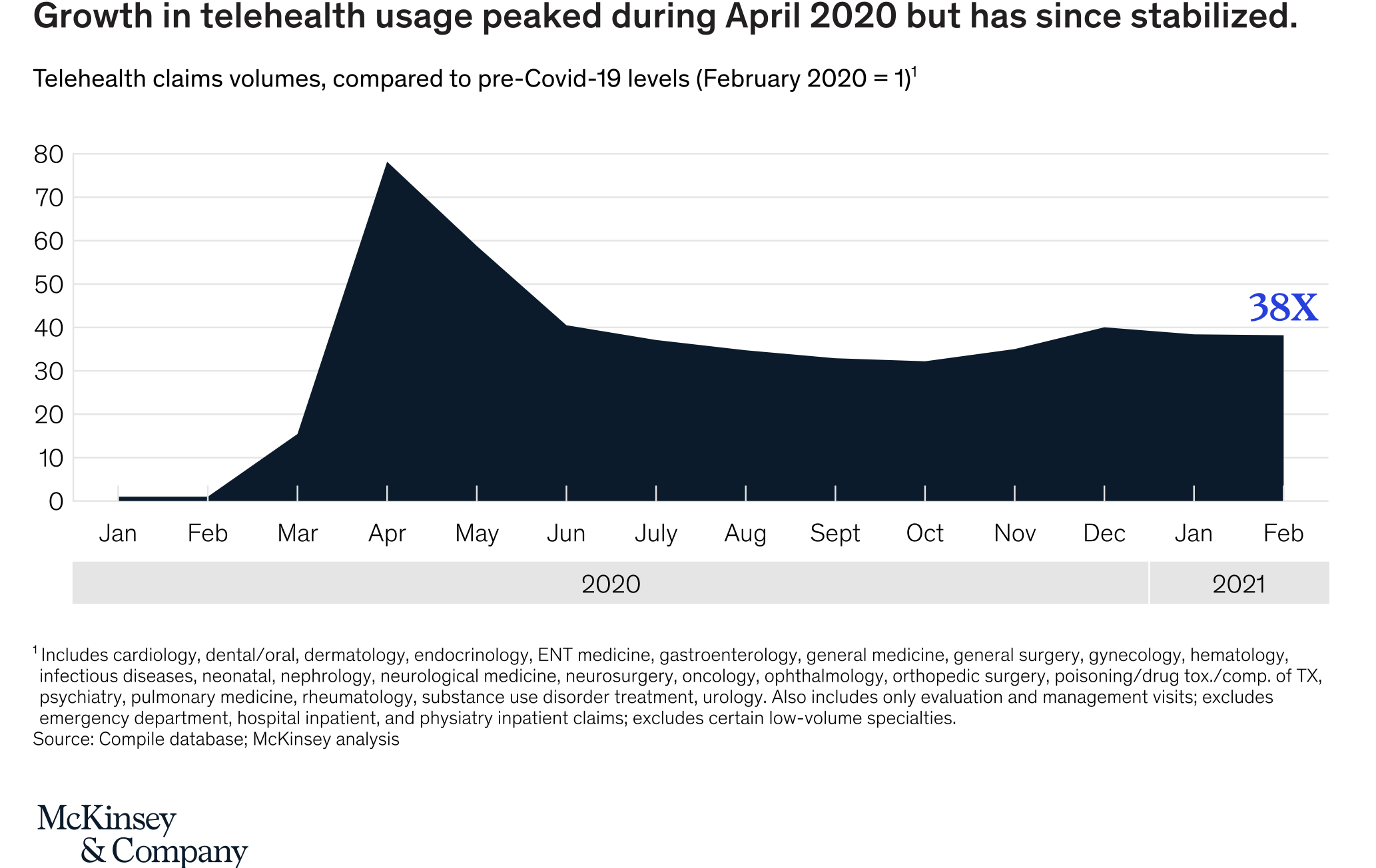This is part II in the series, Why It's a Great Time to Start Remote Patient Monitoring (RPM)
Check out the rest of the series:- Part I: 3 Reasons Remote Patient Monitoring (RPM) is Great for your Patients
- Part II: 5 Ways Remote Patient Monitoring (RPM) is Great for your Business
- Part III: 5 Ways New Technologies are Making Remote Patient Monitoring (RPM) Easy
- Part IV: How Remote Patient Monitoring (RPM) Can Reduce Healthcare Costs for Everyone (and Why That's a Good Thing)
A unique combination of factors has made 2021 a fantastic time for providers, payers, and providers to think about getting started with—or expanding—their Remote Patient Monitoring (RPM) and other virtual care programs. These virtual care programs are considered a subset of the broader shift towards telehealth. This series will look at how we've arrived at this unique point in time and what has changed to make RPM a "must-have" offering in 2021, and looking forward into 2022 and beyond.
COVID has played a role in RPM and other forms of telehealth adoption, as we will explore in the series. However, the general trends that will make RPM a future healthcare staple go well beyond COVID or any kind of future epidemic or pandemic-style event. These trends include patient outcomes and attitudes, reimbursement opportunities, new technologies, regulatory exceptions, and the lowering of financial and other risks to get started.
With that, we continue with part II:
5 ways remote patient monitoring (RPM) is great for your business
Even after the "rebound" of in-person visits and procedures from the 2020 COVID lows, telehealth has grown 38 times from pre-COVID levels and, as of July 2021, represents ~17% of all outpatient/office visit claims with evaluation and management (E&M) services. (Note: Likely, this spiked again this summer and fall, per the Delta variant, as of this writing in October 2021, but the most recent data we have is from July 2021.)
In this sense, 20% of your fee-for-service business has moved online or become virtual. This number is only projected to grow. Fortunately, it’s not 2018 or earlier, when you would perform telehealth without reasonable reimbursement. The beauty of RPM and other virtual care programs is that you can deliver high-touch care management to your patients without having to be on top of every update or issue. You can use technology and a care team staff to provide a high level of high-frequency, high-touch support that has been proven to deliver positive results, and you will be reimbursed for your efforts regardless of final health outcomes.
Mounting evidence shows that virtual care programs are effective, and they also have a high rate for patient satisfaction. Additionally, you are not forced to be "at-risk" for outcomes. 1bios can provide a turnkey solution with everything you need to get started within days. Alternatively, you can also use 1bios exclusively for its software and devices.
1. Replace and expand revenue
Per the McKinsey study, your "in-person" revenues will never return to pre-COVID levels. However, RPM and other virtual care programs can help replace and even expand beyond these lost revenues. For example, you can bill $100–$200 per patient per month for RPM. That's $12,000–$24,000 per year for every 100 patients and roughly $50k–$100k for every 400 patients.
Some patients will also need additional virtual care and telehealth services. RPM drives further in-person visits for the right patients at the right time. RPM and ongoing high-touch virtual care are now reimbursable at lucrative rates because they have been proven to reduce hospitalizations and ER visits. Medicare and other payers are happy to write hundreds of small monthly checks to your business to avoid a single $100,000 hospitalization.

2. Increase patient satisfaction
According to a recent Accenture study, 90% of consumers want to share their daily health data with their providers. This is one of many studies and data points that suggest patients want a more dynamic and engaging experience with their care providers, moving away from evaluations every six to 12 months to a connected experience. Why should healthcare be any different than the digitization of the rest of our lives? Your patients want a connected healthcare experience.
3. Retain existing patients
If your practice or healthcare system is not innovating with RPM and other virtual care programs, your patients will be enrolled with other providers who use them. Providers can enroll new patients in RPM without a long-established healthcare relationship, especially during COVID-19 and the Public Health Emergency (PHE). We are also seeing direct-to-consumer (DTC) RPM offerings aggressively enroll eligible patients who want and will benefit from RPM. You will lose patients if you don't give them what they want.
4. Add new patients
Along the lines of the previous point, practices and systems that want to expand their reach can use RPM and other virtual programs to add new patients proactively. Per points 2 and 3 above, patients want these services, and the barriers to enrolling them are lower than ever before, given the PHE.
5. Position your practice/health system for the future
RPM and other virtual care services are a launch point to engaging your patients in digital health. You can change the billing frequency from a single in-person event every 6 to 12 months to monthly billing for monitoring and high-touch care services. This care service supports improving their health status, keeping them out of the hospital/ER, and providing adjunct billable telehealth services like short phone calls or digital communications, driving additional in-person visits as necessary and required for the right patients. This also keeps others who don't need your services out of your office, which can take away from higher-acuity situations.
RPM and other virtual care programs are great for your business in all dimensions. They will replace lost in-person revenues while also helping you retain and grow your patient roster. Additionally, they will increase patient satisfaction and outcomes. Finally, they will position you for the future and ensure your business is not destroyed by more progressive organizations.
If you're ready to discuss the best approach to start or improve RPM and other virtual care programs for your organization, book a virtual meeting with us today!



